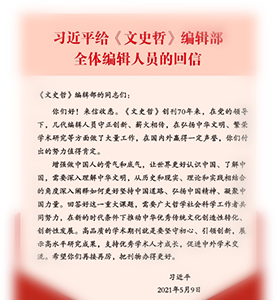图像、丛生与间性——探源中国哲学的新路径 商戈令
孟旦在其中国古典哲学研究中,创造性地运用了“图像”和“丛生”这两个概念。基于这两个概念的解释方案,不但适于展示中国哲学之特质,而且较之当代西方哲学中诸如隐喻、诗化哲学、图像修辞、异延等众说纷纭的新尝试更为简朴,在哲学上具有进一步开发和提炼的前景。实际上,图象和丛生概念所揭示或反映的,不是传统西方哲学意义上的实体或本体,而是“间性(interality)”,亦即非实体的现实。尽管在早期文献里找不到专论间或间性的例证,似乎也没有将间性抽象为哲学范畴的明确努力,但是“间”字在古典文献中的使用却绝不罕见。如何认识和对待现前的间性状态,如何遵循和建设理想的间性条件,实为古典中国哲学的核心关注。正是蕴含在图象及丛生概念中的间性(论)视角,使中国先哲发展出了一种不同于西方的哲学路径与话语系统。
Image, Crusting, and Interality—Probing New Ways of Understanding Chinese Philosophy Shang Geling
Donald Munro has adopted two terms, “image” and “clustering,” as his novel approache to the interpretation of Chinese classics. Comparing the fancy strategies such as “metaphor,” “poetic philosophy,” “imagery rhetoric,” “difference” etc., I found Munro’s approach simpler and more straightforward and it has greater potential for future development. What the “image” and “clustering” are able to disclose is not Being or substance that the traditional western metaphysics has constantly talked about, but “jianxing” or “interality,” which refers to the non-substantial reality. Although in the early Chinese classics there was no particular articulation or theory of interality, the use of the word jian was not rare. Questions concerning how to figure out the current situation of interality, and how to construct and even create the ideal conditions of interality, have been always the central concerns of Chinese philosophy. It is from the perspective of interality, manifested in Munro’s work on “image” and “clustering,” that the ancient Chinese philosophy has developed its own types of philosophical enquiry and discourse, away from the ontological tradition in the West.


